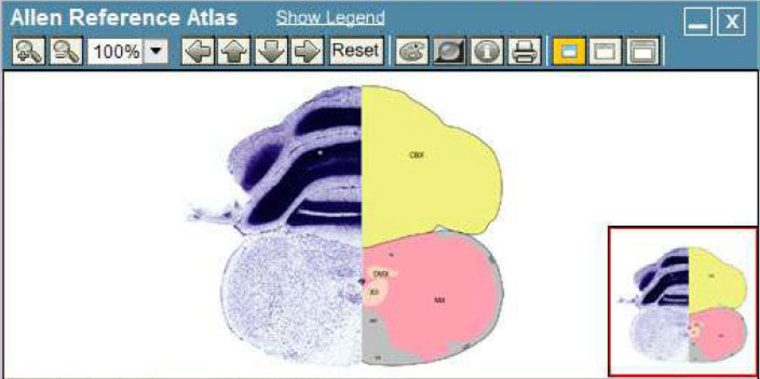The Allen Institute for Brain Science has released a major chunk of data from its mapping of the mouse brain genome, hoping the information will help researchers understand how the human brain works.
Ninety percent of the mouse genome — its complete set of DNA — is the same as the human genome, so the Allen Brain Atlas findings can help advance research into human brain function, behavior and diseases, such as Parkinson's. The institute said it is releasing data for about 10 percent of the mouse genome, or nearly 2,000 genes, plus tools for analyzing it.
"By studying the normal development and function of the brain in this detail, the atlas will give researchers additional insight and understanding into the role of genetics in how the brain works and is constructed," said software billionaire Paul G. Allen, who established the Seattle institute with a $100 million commitment in 2003. "With our commitment to make the Atlas findings publicly available and accessible, the project will support the work of thousands of researchers worldwide."
The institute is also working "to create data-mining tools to enable scientists to take full advantage of its research potential," said Dr. Allan Jones, the institute's senior director for atlas operations.
Which genes affect the brain?
The atlas maps the use, or expression, of the mouse genome onto known brain anatomy to help reveal which genes are turned on in different brain regions.
"Using the Allen Brain Atlas data, we have already uncovered additional genes not formerly known to function in these areas. These kinds of discoveries ultimately lead to a better understanding of disease, degenerative illness and their potential therapies," Jones said.
This first data release enables researchers to search for genes by gene name and examine each gene's expression across the brain. A reference atlas is provided so researchers can identify specific brain regions that use a particular gene.
Future releases will allow queries by region of the brain, the institute's news release said.
Most of the genes in this first data release were selected because they were known to interact with the nervous system.
The Allen Brain Atlas uses a technique called in situ hybridization to indicate where each gene being studied is turned on, using a series of tissue sections taken throughout the brain.
The end product is a purple precipitate that fills cells utilizing each gene. These stained sections are photographed under a microscope, and the data is uploaded onto the Allen Brain Atlas for display on a Web-based image browser.
Completion due in 2006
The project will likely take another year and half to complete. Estimates suggest that the Atlas will contain about one petabyte — 1,000,000,000,000,000 bytes — of data, roughly the equivalent of all the information on the Internet one year ago.
The project will provide basic information about what a neural cell is made of and what its activities are, Jones said.
"Having that sort of basic information will allow us, in the long run, to translate and unravel how genes are connected to specific regions of the brain, which in turn are connected to behaviors and all the functions of the brain," Jones said.
While these are complicated, they are what allow us to look outside and see the weather, feel its impact and sense emotions, he said.
